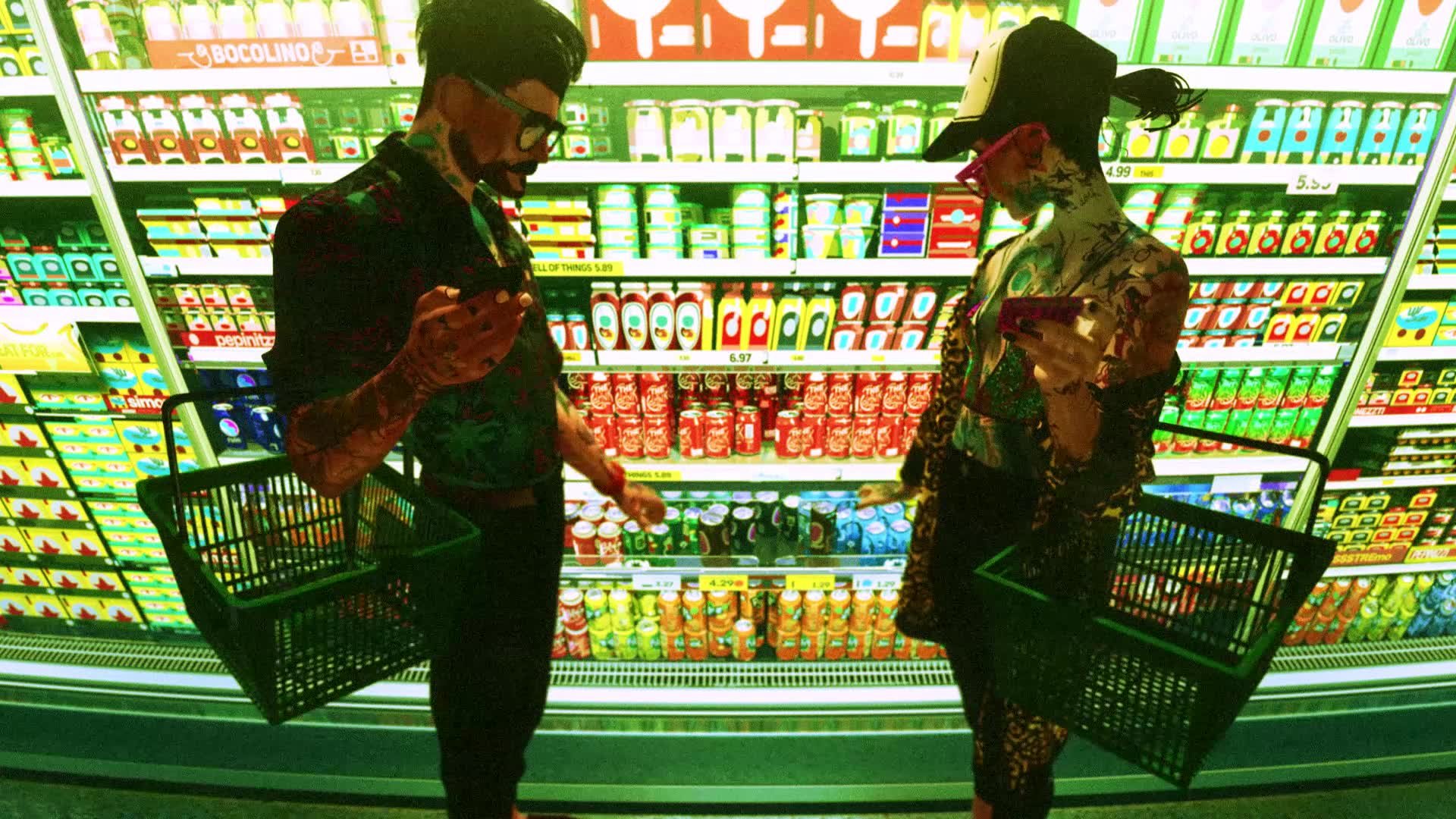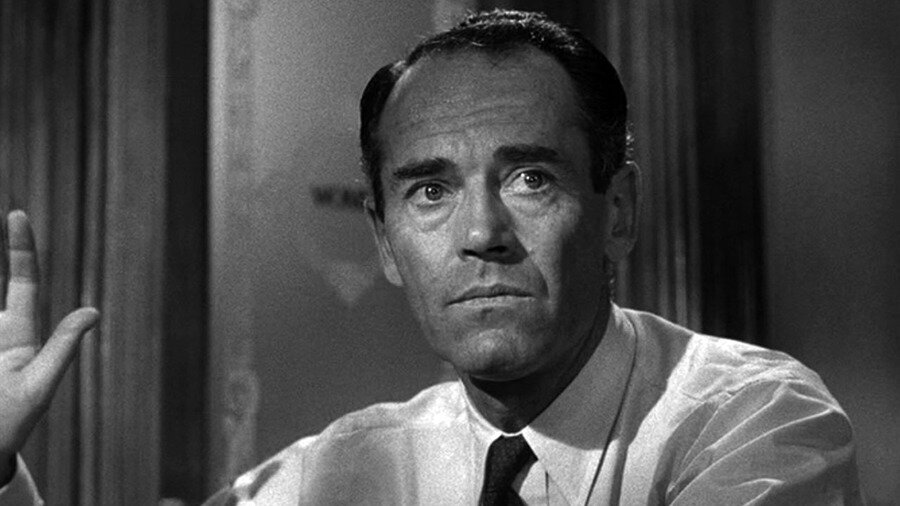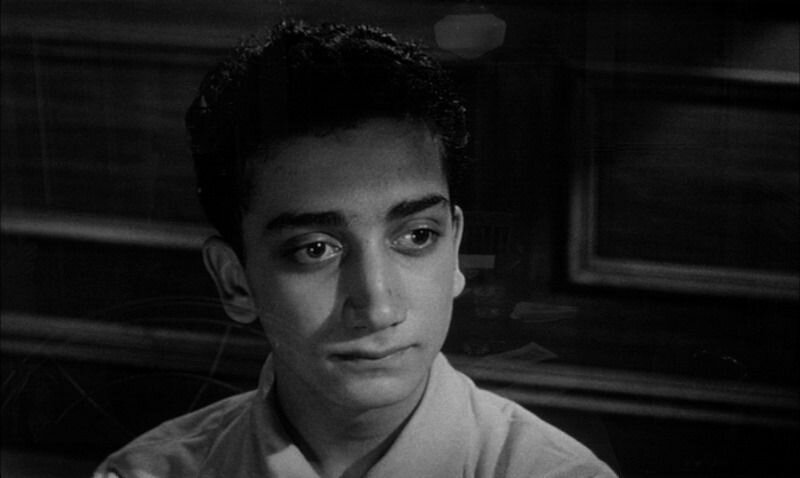The Windshield Wiper, a short film from Alberto Mieglo won an Oscar for Animated short in 2022, and was published for view on YouTube that same year. I only just found this out. Apologies.
The Windshield Wiper in Full
The Windshield Wiper — 2021

The Windshield Wiper — 2021
The Windshield Wiper, a short film from Alberto Mieglo won an Oscar for Animated short in 2022, and was published for view on YouTube that same year. I only just found this out. Apologies.

A meditative and beautiful short film on growing up inside an abusive system and dealing with trauma as a First Nations person in current times.
A wonderful execution of a simple premise in this music video from David Bertram

Ahmed Aldoori recently put out a reaction and artist critique video of the recent Dune trailer from Denis Villeneuve. I thought the trailer looked interesting, I hadn’t seen any visuals from this new film yet and I have really loved Villeneuve’s work in the past.
Mr Aldoori had some criticisms, specifically about the use of color in the film grade. He brings up the point that overall the feeling is grey and muted down. And that while this is supposed to be a stark dry desert planet, that doesn’t necessarily mean ‘colorless’. As a counterpoint he shows many examples from the 1962 masterpiece, Lawrence of Arabia. Also in the desert, also stark, also dry. But because of the film stock, and the realities of a real desert location. Colors lighting that could be easily missed by a very green screen-heavy, matte-painted, digital filmmaking process.
He also takes issue with the reluctance current digital filmmakers tend to have at avoiding black and silhouettes. People shoot raw, they have details in the shadows, and theres a tendency to want to keep that information because its there. And also people all down the line from directors and DP’s to post production artists are more used to seeing this footage where even in the blacks, there is detail. And that affects the final grade.
Ahmed talks about blacks, and their use in a composition to lead the eye. As a way of making a photograph bold and graphic.
Ron Cobb, American/Australian illustrator designer and concept artist died on the September 21, in his 80s.
Ron was know most for his work on the ships and logos and iconography in Ridley Scott’s 1979 film Alien. He also worked on Back the the Future, Total Recall, The Abyss, Dark Star, Star Wars…
More information on his life and history here at We Are The Mutants.
Alien is one of the best lived-in-future worlds in all of cinema. It is dingy and rough, old and broken down. Tactile and utilitarian. In addition to the objects and interiors, there is also a very plausible graphic system for the ship indicating various safety warning. These types of symbols exist in a lot of hazardous workplaces and this version looks clean and futuristic, but also looks like it could have been in use at any point from the 40’s onward. They are completely usable and believable.


Cobb served in the Vietnam war and when he returned he got back to work as an artist, creating many gorgeous and brutal political cartoons for the Los Angeles Free Press. They are critical of the government handling poverty, race, the draft, nukes, environmentalism and police brutality. These comics are an amazing time capsule of the anti-war and politically conscious era and are incredibly relevant today. Sadly we haven’t solved really any of these problems.

For 2020, the Sundance Film Festival employed Studio Lowrie to rebrand with these striking and op-art glyphs and typography based branding. Its simple and powerful, and stands out amid the visual noise of Park City during the festvial. As a system it uses a pared down color pallate and is meant to function across a variety of media and applications, and both static and in motion. It also takes cues from four musical pilars: Jazz, Rock, … Italo-Disco.
Looks almost a bit like navajo art or camera test and focus patterns. The Studio themselves mentions the circular shape is referential of film projectors, eyes dilating or contracting, and the sun.
Branding from Studio Lowrie
Typeface La Nord by Raoul Gottschling
Motion by Connor Campbell
More on It’s Nice That.
Sundance Motion Reel – Connor Campbell

12 Angry Men – 1957 Sidney Lumet
Angry, yes I suppose. And also very sweaty.
It’s amazing that this whole film is just one room and so engaging. Shooting dialogue for 90 minutes, and varying angle and light and distance for tone all worked so well.
It’s incredibly well shot actually. I thought at first that the close ups on the dissenter (Juror 8) were a lot like romantic portrait lighting, with a soft irised-down keylight and that this was supposed to be meaningful, for only him. But other characters each later get this treatment as well. That’s just how they liked to light the close ups I guess.
I was expecting, in part from this light, that there would be a turn where it was revealed he had some malicious intention, like a Keyser Söze moment. Or maybe he were somehow friends with the accused or from the same slum or was somehow otherwise meddling with the trial. I was suspicious for a good portion of this film. There is also an early shot after he reveals he has doubts, in which there is a strange turn in the music from happy and chirpy to a sinister final few bars as we dolly in on him. I thought they were showing their cards here.

'I know their type, he’s one of them’
I thought the point of the story might be to show how easily people can be swayed for good or ill, persuaded by someone’s slick talking. Especially in our current age of subjective truth and a misinformed public and the propaganda machine which is Fox News and AM Radio that is constantly working to undermine the idea of truth.
But the story is rather about first how people can be persuaded sure (maybe I was half right), but also how even when things seem clear cut, with deeper examination they may not be. And that our personal internal prejudices do more to affect our opinions than we realize. Lumet himself explains it that the dissenter is the hero, he is the voice of reason. This I missed until much later when it becomes obvious that the hard guilty plea people have deeper prejudices.
The story is also about race and class prejudice which makes sense for the time it were made. The assumptions you make of your neighbors who are different ‘those people’ ... ‘they don’t value human life like we do’. And sadly, these prejudices still haunt us, even if their forms may have altered slightly. We are still dealing with these misconceptions of our neighbors in America, right now.
Another very interesting technical detail on display here is the staging and camera morphing across the whole picture. That as the characters and story have arcs they follow, so too does the camera. In his book, Making Movies, Lumet describes this at play in several pictures. Using aesthetic elements to convey meaning over the course of the film.
It never occurred to me the shooting an entire picture in one room would be a problem. In fact I felt I could turn it into an advantage. One of the most important dramatic elements for me was the sense of entrapment those men must have felt in that room. Immediately a 'lens-plot' occurred to me. As the picture unfolded, I wanted the room to seem smaller and smaller. That meant that I would slowly shift to longer lenses as the picture continued. Starting with a normal range (28mm-40mm) we progressed to 50mm, 75mm and 100mm lenses.
In addition, I shot the first third of the movie above eye level. And then, by lowering the camera, shot the second third at eye level and the last third below eye level. In that way, by the end, the ceiling began to appear. Not only were the walls closing in, the ceiling was as well. The sense of increasing claustrophobia did a lot to raise the tension of the last part of the movie.
On the final shot, an exterior that showed the jurors leaving the courtroom, I used a wide angle lens. Wider than any that had been used in the entire picture. I also raised the camera to the highest above eye-level-position. The intention was to literally give us all air, to let us finally breathe, after two increasingly confined hours.
This is a very simple idea to execute across the film and it’s affect might be hard to detect viewing casually. But surely you can feel it. This decision adds to the overall feeling in the film in ways that the acting should, the light should… but here the camera too is used to make you feel the story. It’s so smart.
His book is one of the best I’ve ever read on the technical and creative process of making a film and the decisions that go into directing. I strongly recommend it anyone interested in movies.

Tap Dancing away from your bullshit
I'd been meaning to watch this one for years because I'd read it’s a great example of surrealism in film and blending fantasy and memory into objective reality. This movie happens to be even a bit more relatable and cutting as it is by a creative person about their creative struggles. I always find this really nice and reassuring that even these huge directors, who's success hinges on their ability to HAVE A VISION and pull that vision together with a team, still struggle with not having answers. or not feeling relevant.
I watched a short interview with Terry Gilliam on the disc talking about the film and he calls out the shot of Guido walking down the hallway in the hotel where various cast and crew are popping out of their rooms needing answers how to execute their jobs. And Guido has no answers... and by the end is literally dancing away from them. Avoiding the responsibility. It’s a really beautiful visual pun illustrating the feeling or issue.
...clearly Fellini was working on a movie, he didn't know how to finish it, it wasn't coming together, and so he wrote a movie about making a movie, about a director who doesn't know how to make or finish his movie.
And funnily Fellini actually tells it a different way, where it was during the production of this same film, a film he intended to be about a creative person (maybe a writer?) who suffers a creative block that he lost his way after the DP was hired, sets built and booked... he visited the set and felt ashamed the he had lost the idea, he had no vision... and in that feeling he found the film.
The crisis came to a head in April when, sitting in his Cinecittà office, he began a letter to Rizzoli confessing he had "lost his film" and had to abandon the project. Interrupted by the chief machinist requesting he celebrate the launch of 8 1⁄2, Fellini put aside the letter and went on the set. Raising a toast to the crew, he "felt overwhelmed by shame… I was in a no exit situation. I was a director who wanted to make a film he no longer remembers. And lo and behold, at that very moment everything fell into place. I got straight to the heart of the film. I would narrate everything that had been happening to me. I would make a film telling the story of a director who no longer knows what film he wanted to make".[11]
This is the kind of like, Oscar-bait navel gazing films about films we are all pretty used to seeing in the last 20 years, and that can be a little annoying at times. but I really appreciated this one. Making work is hard, being creative is hard. Leading a team is hard. Collaborating is hard. I appreciate this candor.
AND ALSO somehow about 1:45:00 into the film I thought it just seemed impossibly long. Like is this movie going end? or naw...
And it was very Interesting to see things Tarantino ripped in their original context (the dancing midfilm for Pulp Fiction, the Mia Wallace styling) and what feels like circus music (by Nino Rota) that Danny Elfman must have been aware of when he wrote the theme from Pee Wee's big adventure. It feels also related to Synecdoche New York another meta film which is surreal and funny, but also incredibly brutal.
++++
Anyway, Fellini kills, very fun. Very Style. I give it Eight (e mezzo) Parmesan Wheels.

From Vimeo:
The Windshield Wiper is a very personal and particular vision on Love and relationships.
Written, directed and designed by Alberto Mielgo and Produced by Leo Sanchez Studio and Pinkman.tv. Running time : 15min
Key Frame Animation
albertomielgo.com
leosanchezstudio.com
pinkman.tv
Alberto Mielgo, hot off of both Into The Spiderverse and Love Death & Robots, released this trailer last month for The Windshield Wiper.
It’s amazing to see how even as this work is so hard to pin down exactly how its made, it is expertly translated to animation. It is both technically and an creatively astounding.
Both the digital and physical paintings are wonderful and it was hard to figure how any of them were made when I first came across them. Hard to distinguish digital from real paint. The style and execution is so strong. And digitally, his was one of the first artists I saw working from a pure speed perspective, no tricky brushes, no layers, just paint… Gotta go fast.
With the animation, specifically for The Witness (from Love Death & Robots) they make a point to call out KEY FRAME ANIMATION… because its unclear how this film was made. Is it mocap? Is this rotoscoped over live action? The lighting and render quality bridges this amazing gap of realism and style.
It looks photographic, it looks painted. It looks right.
Previously on Alberto from me.
SpiderVerse Concepts:
Love Death & Robots – The Witness

Simon Stalenhåg
Simon Stalenhag is a painter from Sweden who’s work describes a very vivid and compellingly decaying future.
I’ve been really fascinated recently of the idea of a large scene, rather than an intimate one, like a classical painting where there is a full story playing out before you. Stalenhags paintings imply the existence of a complicated and deep world. There’s so much in atmosphere and scale, as well as inference in these images. And it’s that inference, that suggestion without explanation, that is so fascination.
And this world is so intriguing that it’s actually getting its own series on Amazon. The pilot will be directed by none other than Mark Romanek. It will be very interesting. Theres a lot possible in Simon’s imaginary world to be explored.
I’ll be watching.
Clara Nova – Echo
Directed by Clara Aranovich
“Photography does not create eternity, as art does; it embalms time, rescuing it simply from its proper corruption.” -André Bazin
Aranovich writes, “This has long been my favorite quote about cinema; it gets to the heart of the nostalgic power of film, a power that overcame me at a very young age and has led me to pursue it ever since. Celluloid has always carried a mythical quality to me...”
from Booooom
Aranovich uses this simple premise, a sort of lo-fi take from both old and new, to tell a story of place and probably empathy and understanding as well. New mobile technology (instagram -boomerang) for it's premise; meets old film photography for it's aesthetic. It's interesting to see as well, with all the effort put into grading and color for digital film to get back to the tack and grit of old film, maybe its simpler just to go back and find film.
The technique is fun as well, shooting with a camera that has 4 side by side by side lenses. Its a fun idea to see 'steroscopic' in a why that is so immediate and intimate. like a Polaroid. Goofing around with your friends.
The story is simple: have a walk around LA, make friends, enlist people into your art/film/project, make some dance shapes with you dance friends. It's nice. It's wholesome. You can see they are having fun especially in using the fact they are shooting something to share with and meet new strangers along the way.

Alex Prager is a photographer and filmmaker who trades in beauty, nostalgia and surrealism.
There's a great deal of storytelling happening in these photos. Beyond just one surreal moment, or some reference to the past, she is setting up some scenes with many things happening at once. A car crash, a dead lover. Almost like a renaissance painting or comic book spread. Everything happening at once. A much bigger story implied by the specifics of this captured moment.
There's a lot of ambiguity here, but there's also implied depth.
Coming from animation or film I think this is a very interesting way to think about storytelling. Can you put enough details in the image to imply a bigger story? Can you tease them? Draw them in with a few threads but not weave the whole thing together? I think this is a powerful idea for film or photography alike.
Battles Yabba is a strong example of taking a simple theme and extrapolating it to build a much bigger greater idea.
I hadn't realized MGMT had a new record from this last year, but came across this one through suggestions on youtube. And I like even from a simple storytelling perspective of repeating ones day, and weird dream logic, before all the visual effects. And the effects are great. As close as I have seen to how psychedelia actually works, applying patterns.
People have come a long way with algorithms to apply art styles to an image, or that one terrifying one which puts faces and legs all over everything and eyes and turns things into many faced frogs. eek. And this use, is one of the best I've seen in video.
And I always love when I see something where I'm not entirely sure how its made. Well done.
Directors: Mike Burakoff & Hallie Cooper-Novack
VFX Supervisor: Jamie Dutcher